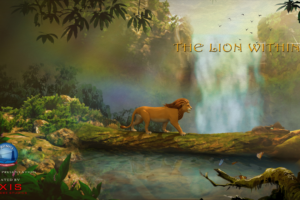
Navigating Rocky Waters
- Posted by Manaan Kar Ray
- Categories Recovery
- Date July 12, 2020
Navigating Rocky Waters
Recovery From Mental Health Challenges
To draw inspiration from individual recovery journeys of our patients we have used a nautical analogy. This brief essay is full of life jackets, lifeboats, anchors, lighthouses, maps, compasses, etc. So, we hope you enjoy being at sea.
Most of us most of the time can ride the waves and navigate through narrow straits. But sometimes, even with our sea survival skills, we struggle to cope with adverse weather. Capsizing or a feeling of drowning is often what our patients report when they are referred into services. The sense of sinking permeates friends and relatives, often dragging them down as well. It is a dark space into which we often step. More often than not, our initial focus as mental health practitioners is on safety, and we are very keen for them to hold on to a life buoy so that we can get them onto a lifeboat. Initially we do the rowing and baling out, though sometimes our direction is not aligned with that of the patient. However, the goal remains that as the patient begins their recovery journey we start to share the rowing while still offering navigational guidance. Gradually, as our patient takes over steering as well, we recede and take up the position of being a lighthouse, showing the way through uncharted rocky waters.
There are those who might need to go all the way on to solid land in order to chart their next journey. Many, though, will need to get just to the safety of a ship that is anchored by the coast. Wherever the initial journey ends it is only a matter of time before life’s challenges will dictate that they have to venture out to sea again. After all, we cannot discover new oceans unless we are willing to lose sight of the shore and ride the waves again. Casting away can be tricky and venturing back into the water requires tremendous courage. Services will provide the initial impetus and the buoyancy on offer will aid in the early days. Hopefully, patients will discover a life beyond illness by gradually spending more time going solo until they have the confidence to sail single-handed. Peers who have been on similar voyages can be a great source of inspiration and will often be able to help our patients identify the navigational buoys. The unexplored waters may be treacherous at times and can present new challenges but patients who have now learnt advanced sea survival techniques are more adept at riding currents and reading tide charts. On this journey the light beam from the lighthouse gradually fades into the distance as the patient gains confidence in using a compass. A new purpose in life, support from local fishing communities and a jointly agreed plan will help to give them a sense of where they are in their journey, with the faint beacon now only serving as a point of reference like a North star. A North star that says, the past is a point of reference, not a place of residence.
Trouble brews when the use of a compass to or from a point of reference gets completely replaced by maps and charts. These maps often have organisational boundaries that get in the way, not to mention that a chart is not much use if the fog descends or sand banks shift. Gales can blow up suddenly and unexpectedly and things can happen, but with a compass the patient can navigate around the eye of the storm or the iceberg in the way. However, some very vulnerable individuals face additional hazards. For them learning to go solo might feel like trying to survive in shark-infested waters. This causes huge anxiety as they often worry their distress flare will not be spotted. They appreciate that the coast guard or air sea rescue are at full stretch and in their moment of crisis services might not be in a position to guide them towards the shore. Learning to ride this wave of anxiety is the recovery challenge not just for our patients but for services as well. Practitioners also find themselves walking the tightrope between taking positive risks of letting go and managing safety through holding on. They too worry about not spotting the distress flare and slipping from the tightrope into shark-infested waters. Perhaps we too often get stuck behind the borders on the map and argue the toss about what is mine and what is your responsibility, rather than thinking of the person’s overarching journey and direction and what we can do to help them reframe their life. Both the answer and the challenge lie in the use of a compass not a map.
The reality is that as individuals we never solve problems; we swap them for new ones. So fixing things while someone is on shore is a pretty pointless exercise. However through the journey, if one can reconnect with the ability to cope with adverse weather conditions and new challenges, then we are getting somewhere. We then embrace agency and self- belief, which are invaluable tools as enabled people can sail out to catch the most favourable winds. We want to get to the horizon but there will be strong waves in the way. Sometimes they will push us back, sometimes we will overcome. When we do cross a wave we believe we have succeeded, but we have failed to get any closer to the horizon as it recedes. Leaving behind this paradigm of success and failure it is best to acknowledge that life’s goals are ever-changing and as we reach one, another develops. With our patients we are there for a very short time, but the learning and enabling in each transition of our journey, from life jacket to life boat, from rowing to shared-steering and so on, will hopefully be life-long. The distant light of the lighthouse can act as a compass while at sea, when on solid ground, the mirrors in the lighthouse that amplify the tiny beacon, can reflect back the strengths of the individual giving them the confidence to venture out to sea again.
You may also like

